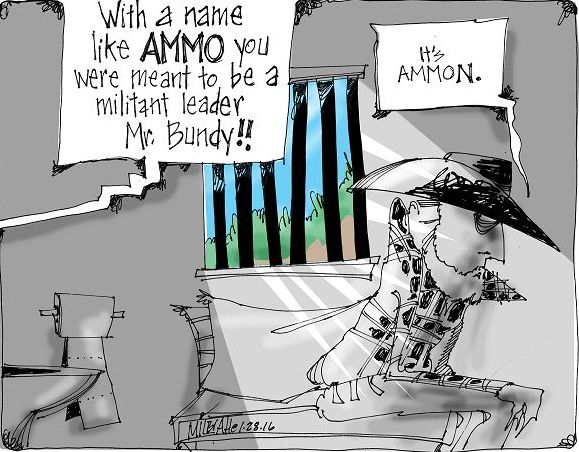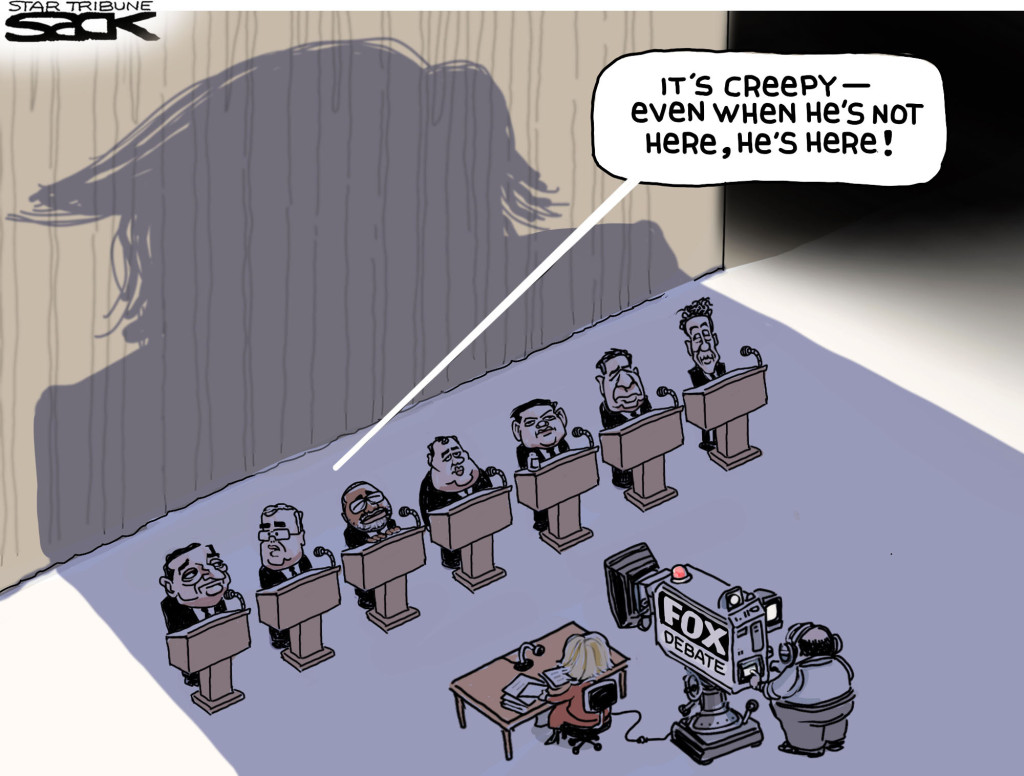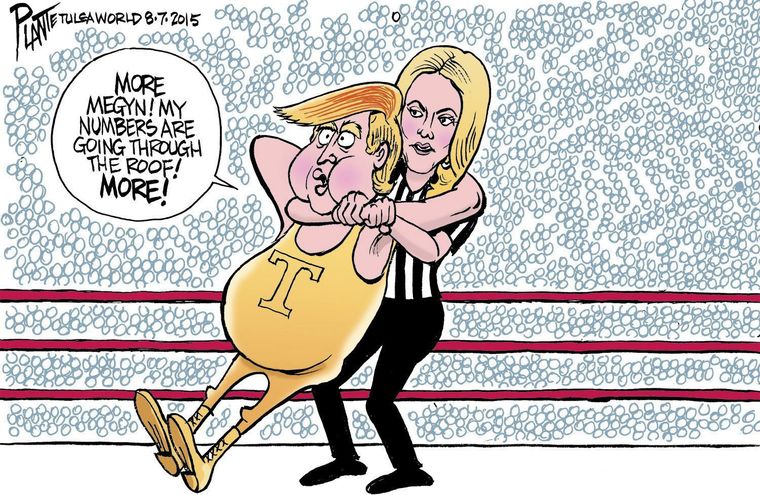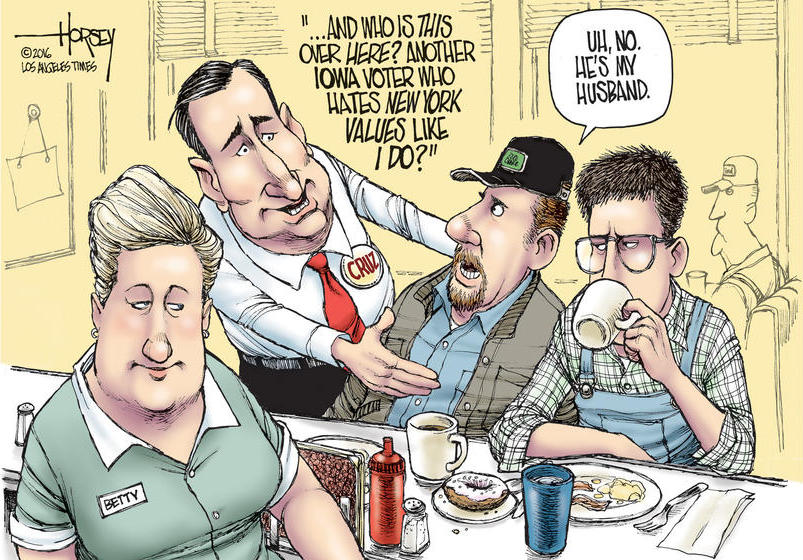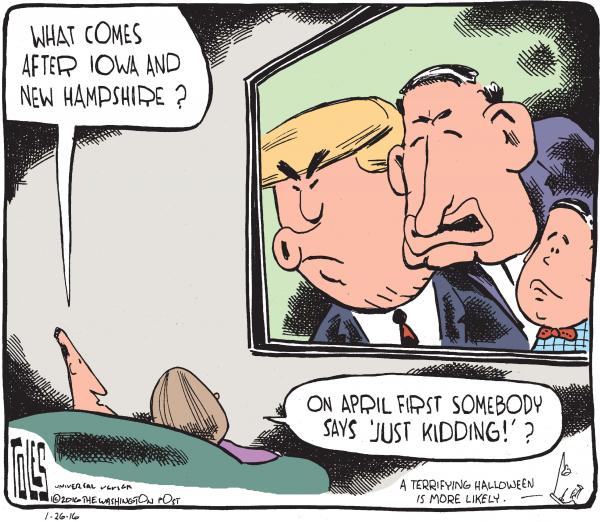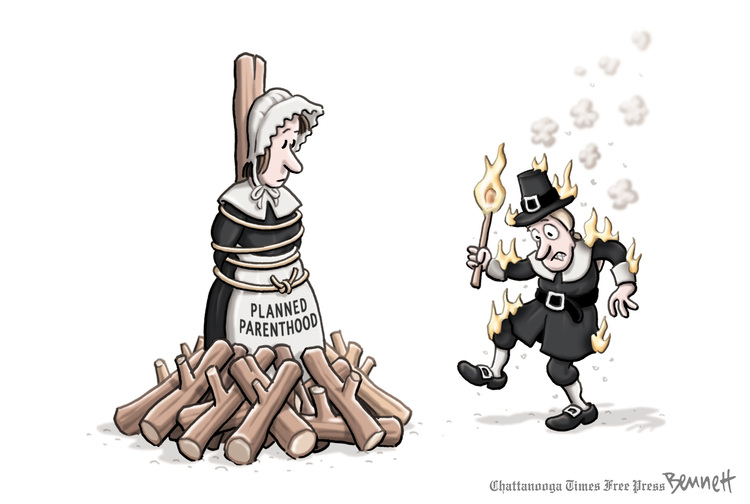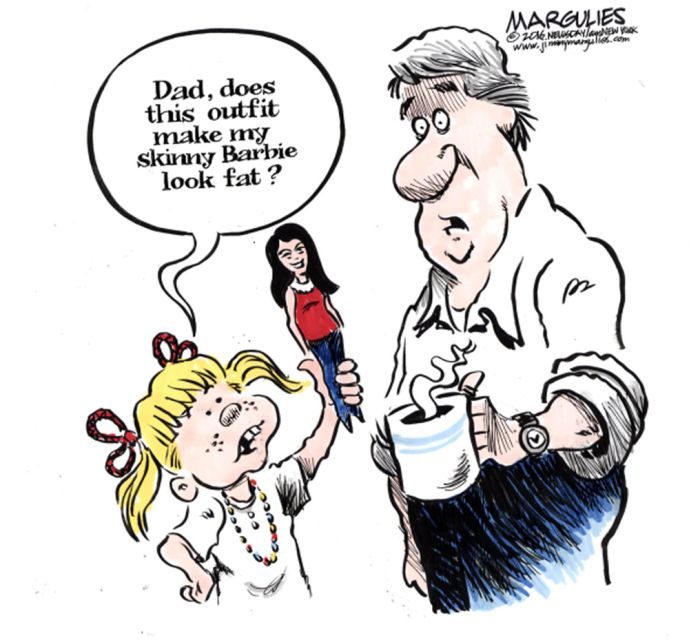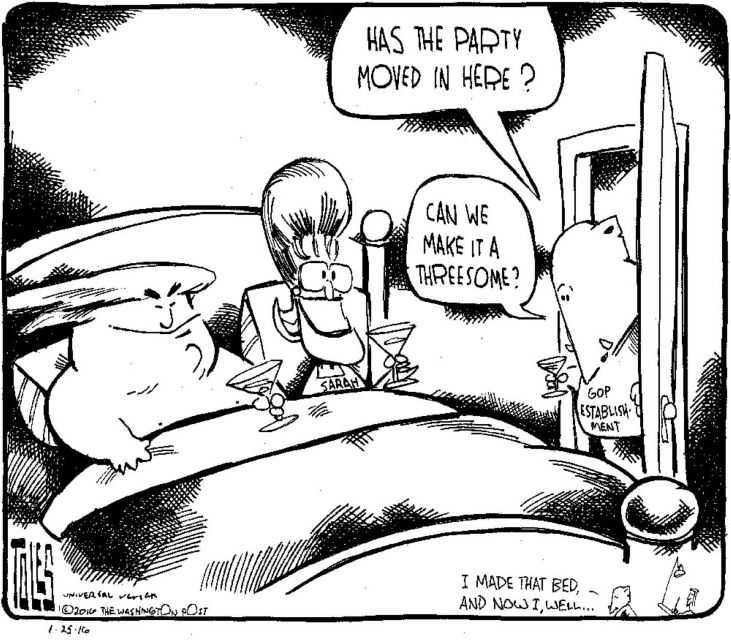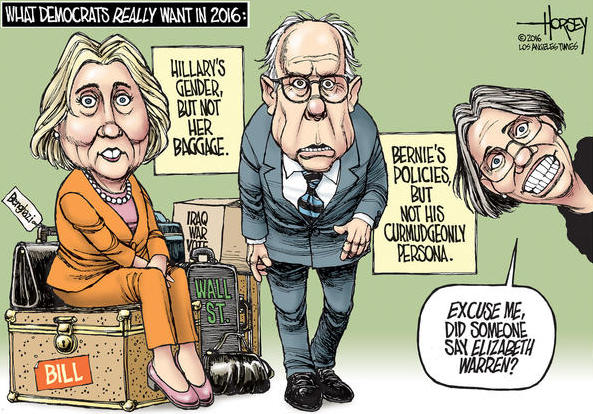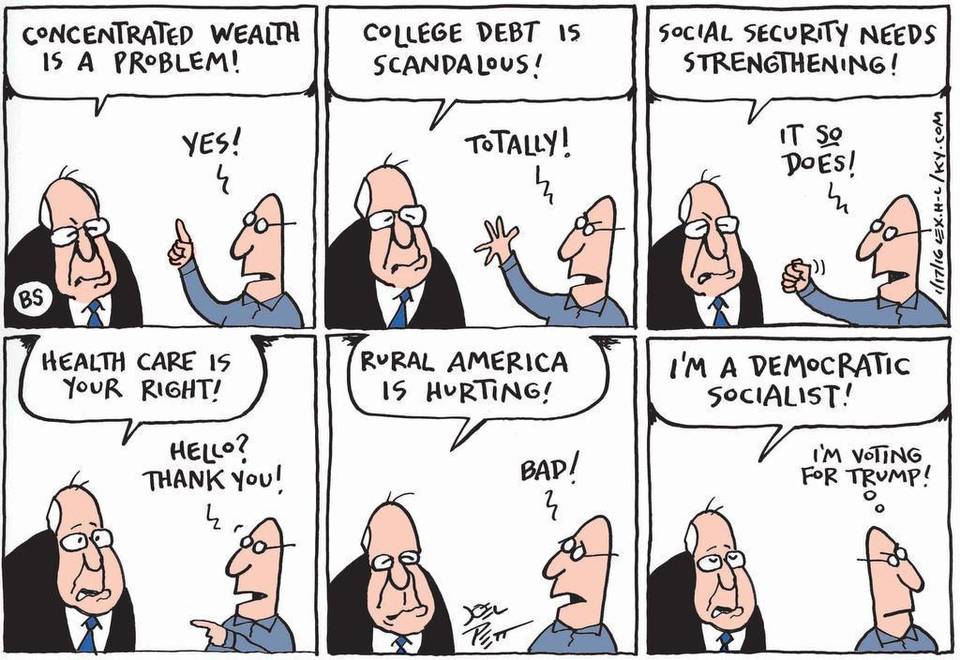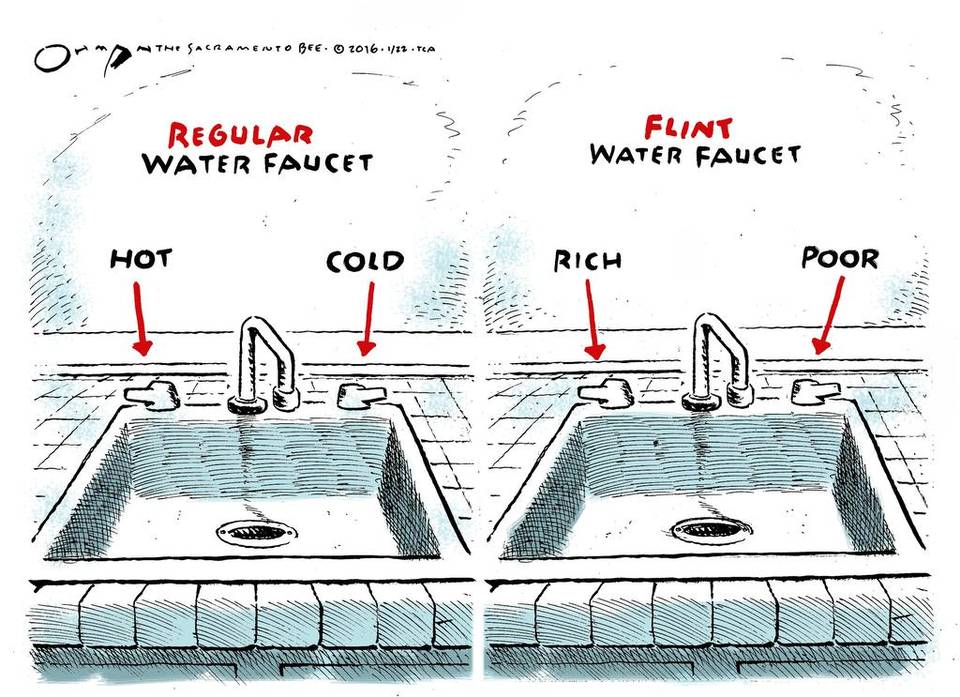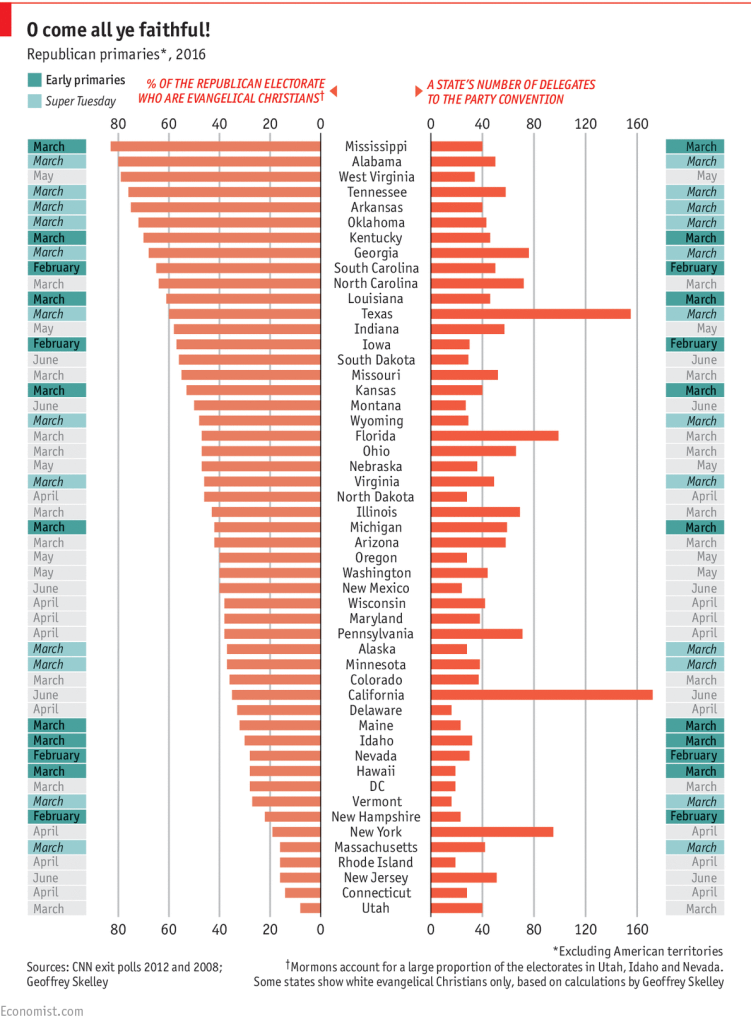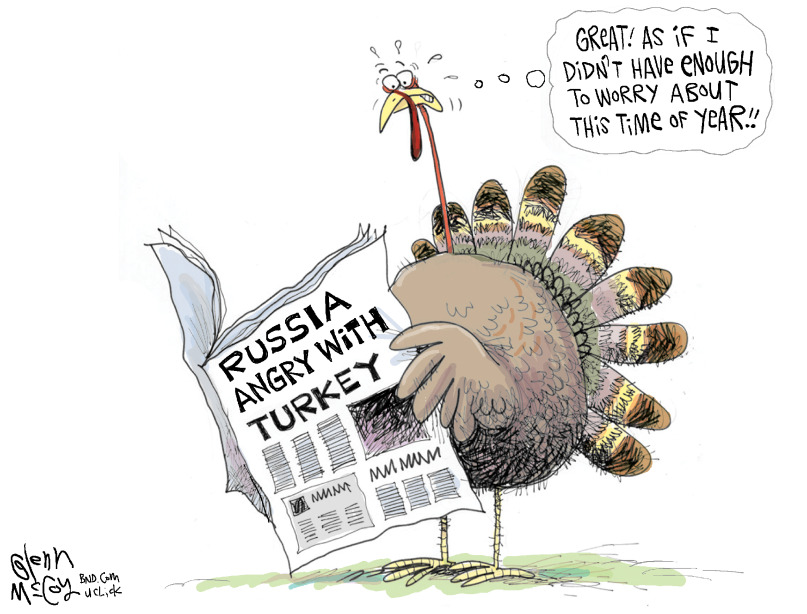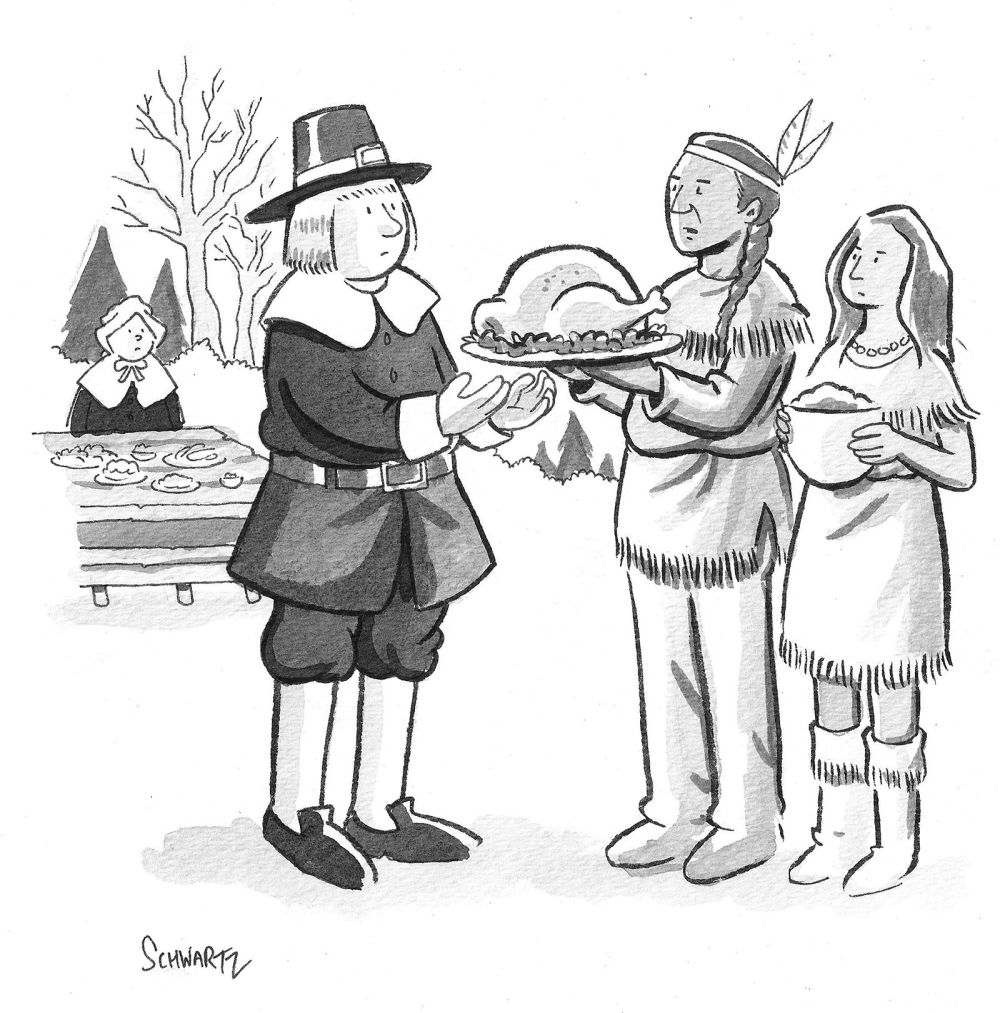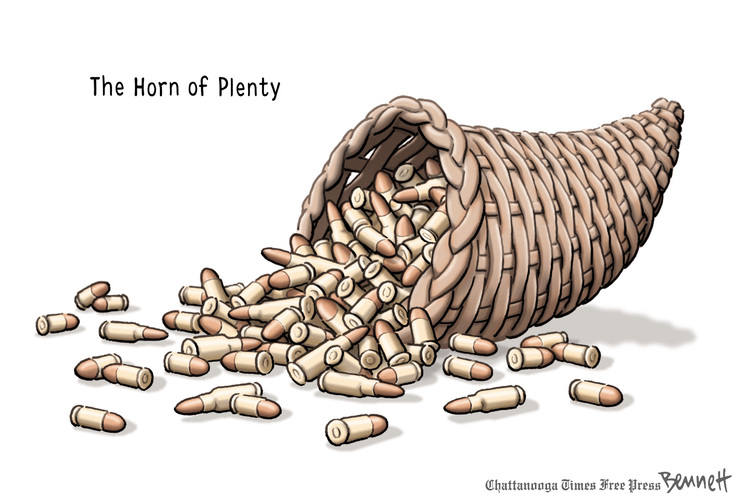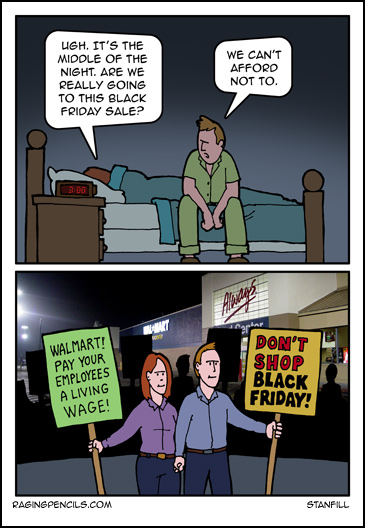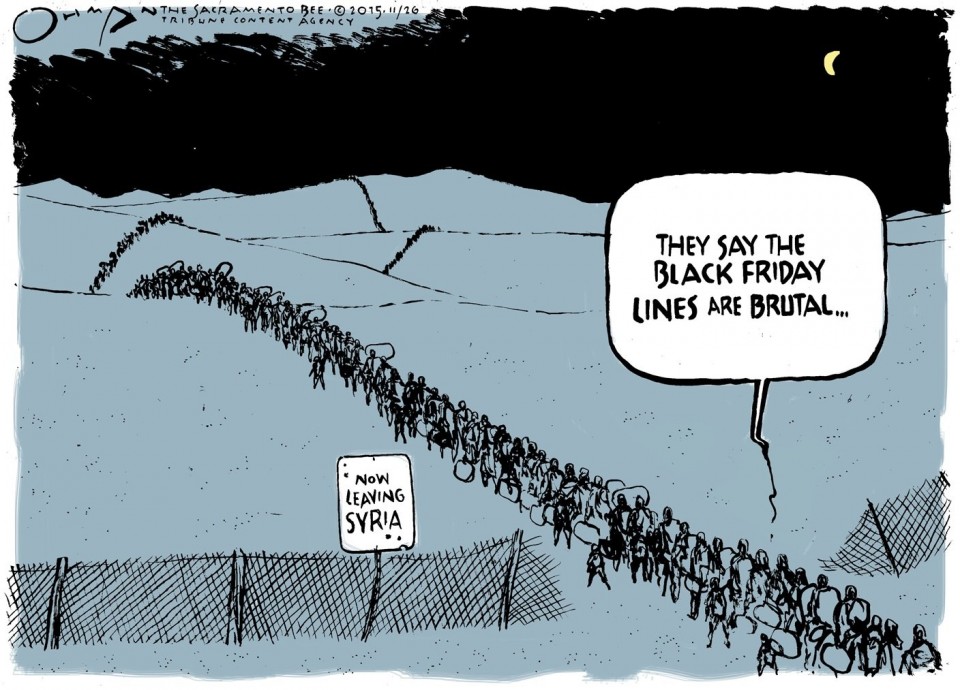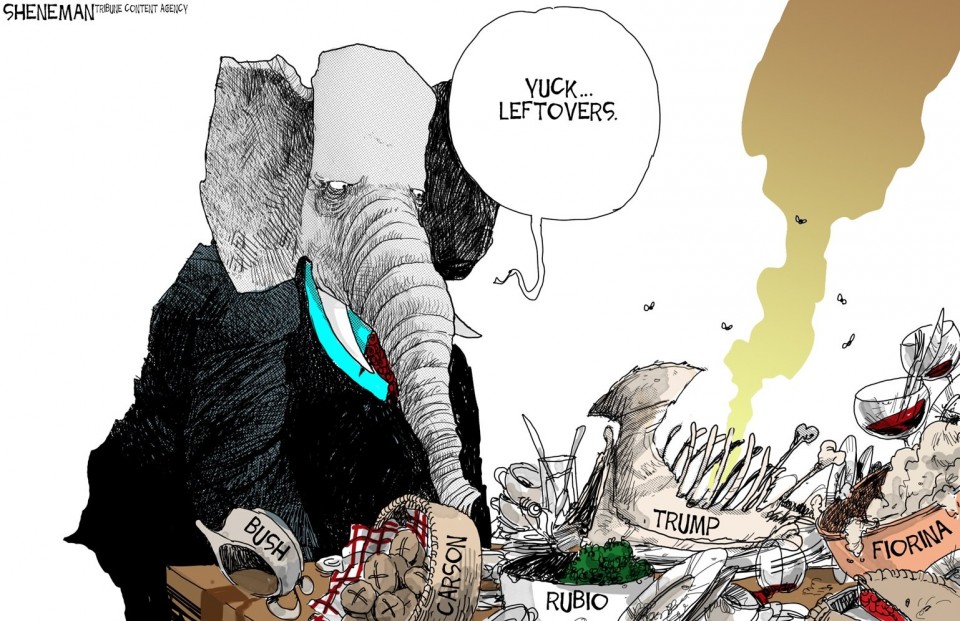We have entered the presidential election year, but we, the people, really do not see any candidate as the answer to our problems. Voters on both sides of the aisle think the country needs to turn a page. We are frightened and angry, and increasingly feel that the two parties have no answers to our questions about tomorrow.
The Democrats say the choice is Hillary or Bernie.
The Republicans say we should choose between Trump, Marco, Ted or Jeb!
Consider what Tom Friedman said in Wednesday’s NYT: (emphasis by the Wrongologist)
The agenda that could actually make America great again would combine the best ideas of the extreme left and the extreme right. This year is probably too soon for such a radical platform, but by 2020 — after more extreme weather, after machines replace more middle-class jobs, after more mass shootings and after much more global disorder — voters will realize that our stale left-right parties can’t produce the needed answers for our postindustrial era.
Ok, agreed! Friedman argues that it’s time for an extremist, a nonpartisan, whose platform draws ideas from both sides. To give Friedman his due, he outlines a fairly radical agenda that includes universal health care, a form of income guarantee for low wage earners, increased military spending along with some unintelligible tax reform:
Slash all corporate taxes, income taxes, personal deductions and corporate subsidies and replace them with a carbon tax, a value-added consumption tax (except on groceries and other necessities), a tax on bullets and a tax on all sugary drinks — with offsets for the lowest-income earners.
A Value-added Tax? Instead of a progressive income tax? That’s the icing on Tom’s pro-business cake.
So he has some good ideas, and some that won’t work. That makes him the same as our two political parties. Much of the problem can be traced to the Democratic Party walking away from its intellectual base in the New Deal and the Great Society, and failing to offer better choices. As Sam Smith says:
It’s [the Democrats] failure to come up with alternatives, [while following] an agenda that appealed to comfortable and more upscale liberals rather than to ordinary Americans.
Bernie Sanders is a New Deal Democrat in “democratic socialist” clothing. He is the first democrat in decades to look outside the box for solutions to the problems our current economy visits on average people. It is unlikely that he will beat the Clinton political machine in 2016.
Hillary Clinton leads in the primary polls, but is she electable in the general election? No one should enter the 2016 general election thinking that HRC isn’t a vulnerable candidate. Democrats seem to forget that in 2008, she lost to a little known black guy with a minimal political record.
If voters are looking for a political savior, Hillary is more of the same middle of the road economics with a slight tinge of social liberalism that Mr. Obama offered.
The question is, has the country moved past that kind of “political triangulation” that Bill Clinton perfected in the 1990s? In 2008, Mr. Obama won as a new breed of politician. By 2012, with staunch legislative opposition from the GOP, he was triangulating to win a 2nd term. Can triangulation work again for Hillary?
Sam Smith points us to the age issue:
Nobody’s talking about this, in part because Donald Trump and Hillary Clinton would each be the oldest presidents except for Ronald Reagan. But what if Clinton at 68 faces Rubio or Cruz, both in the mid-forties? It makes the image of a new future considerably harder to project.
He might add that Bernie Sanders is 74 now. Ronald Reagan was 78 at the end of his 2nd term.
So what’s the alternative? It is too late for 2016. Partly due to the strength of Hillary’s resume, the Democrats have no viable alternatives. If Ms. Clinton stumbles, the Democrats would be trying to win with Bernie Sanders, who might do well, but who could also make the George McGovern 1972 shellacking seem like a win. This is indicative of a huge problem for Democrats: It has no viable bench.
Assuming that Clinton is the Democrats’ choice, her liabilities could be lessened by treating the campaign more like a struggle between opposing parties instead of one between political celebrities. The argument becomes: if you want to retain Constitutional freedoms that are under attack by a conservative Supreme Court, if you want to keep Social Security, Medicare, food stamps and other social programs, if you want less foreign adventurism, then you have to vote Democratic regardless of what you think of Hillary Clinton.
Despite the fact that many of us are desperate for something shiny and new, this contest is not a “Survivor” or “American Idol” TV series.
It’s the 2016 presidential election.


